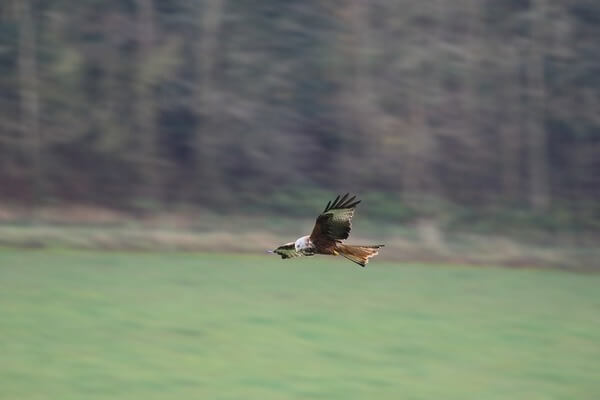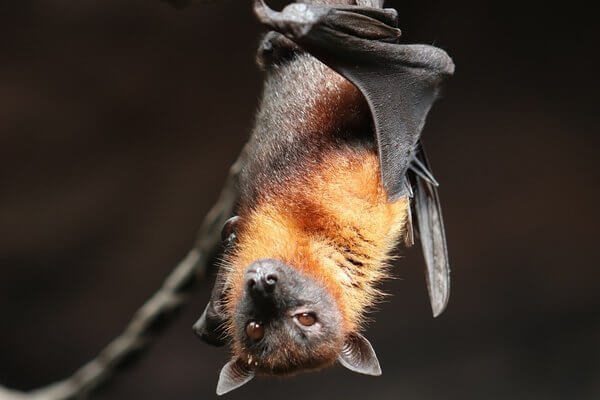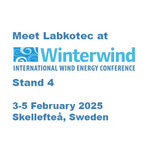News Release from windfair.net
Wind Industry Profile of
Improving Detection Systems for Wildlife
A new publication by Germany's Federal Agency for Nature Conservation (BfN) together with the Competence Centre for Nature Conservation and Energy Shift (KNE) and Fachagentur Windenergie an Land (FA Wind) examines the question of how technical systems on wind turbines can be used to avoid bird collisions. The study focuses on steps required to ensure that such technical solutions are applied as quickly as possible.
"We hope that in the foreseeable future technical systems will be powerful enough to effectively prevent bird collisions with wind turbines at a number of locations. The publication provides an overview of the current state of development, existing challenges and at the same time provides initial answers to accompany and support the process of recognition and introduction of such systems to reduce bird collisions," says BfN President Prof. Dr. Beate Jessel.

The red kite is in focus when it comes to bird strike (Image: Pixabay)
For three years now, the project has been following the technical development for detection and identification of birds in the airspace around turbines. The systems are getting better and better: "With the new camera or radar systems, the airspace around a wind turbine can be observed. If a collision-prone species comes dangerously close to a wind turbine, it can be temporarily switched off. The detection of the bird species and the reaction of the turbine to it must be reliable," explains KNE Director Dr. Torsten Raynal-Ehrke.
The researchers are in constant exchange at conferences, technical discussions and research projects, such as 'NatForWINSENT' (Nature Conservation in the Wind Test Field). A wind energy test field of Wind Energy Research Cluster South (WindForS) planned on the Schwäbische Alb, Germany, is also intended to serve as a research facility for accompanying nature conservation. Main aim is to develop and test avoidance measures that reduce conflicts between wind energy use and the protection of birds and bats. In the first and central part of the project, a research concept will be developed to design and test avoidance measures at a given site that are suitable for the protection of birds and bats during the operation of wind turbines in complex inland areas.
The U.S. is a step ahead yet. NRG Systems, a developer and manufacturer of intelligent technologies for a range of wind, solar and meteorological applications, has currently secured the cooperation of Siemens Gamesa. The plant manufacturer has promised its support for the installation of NRG's Bat Deterrent System.
The system uses ultrasound to prevent bats from entering the zone of a wind turbine that is swept by the rotor. Each system has several ultrasonic generating units mounted on the turbine nacelle and a control unit for seamless integration into the wind turbine's SCADA system. James Crouse, Siemens Gamesa’s Aftermarket Category Manager – Mods & Ups, says, “We are always looking for ways to mitigate risks to wildlife. Working with NRG to bring the bat deterrent technology to our customers has been advantageous for all stakeholders. When Siemens Gamesa performs the installation, we are giving our customers peace of mind knowing the structural integrity of the wind turbine is preserved and the warranty intact.”
The first installation under SGRE's leadership took place in April 2020 at Northland Power's Grand Bend 100 MW wind farm in Grand Bend, Ontario, Canada. The turbines are subject to strict regulations in the region regarding bat protection and were therefore ideally suited as test objects.

NRG Systems' Bat Deterrent System is designed to prevent bats from colliding with wind turbines (Image: Pixabay)
Jim Mulvale, Northland Power’s Senior Director, Environment, said, “We needed to find a deterrent technology to reduce bat mortality without having a significant impact on production, and are optimistic that the NRG acoustic deterrent system will be effective.”
This is consistent with the German research. "It is apparent that questions concerning the performance of the systems can already be answered today. A consensus is also emerging on the minimum requirements for individual factors that are decisive for the effectiveness of systems," notes Torsten Raynal-Ehrke. However, there are still technical and economic aspects as well as questions regarding implementation in the most diverse project and location constellations.
However, the researchers are confident that further practical tests in the coming years will deliver corresponding results in order to make the expansion of wind energy even more nature-compatible in the future.
- Author:
- Katrin Radtke
- Email:
- press@windfair.net
- Keywords:
- NRG Systems, Siemens Gamesa, turbine, wind turbine, bat, bird, collision, detection system, Bat Deterrent System, USA, Germany, research, BfN



























